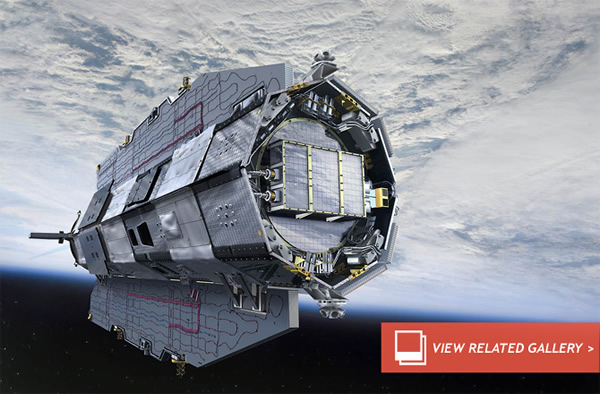Spacecraft Down: Gravity Probe Suffers Fiery Death
The day has finally come.
The European Space Agency (ESA) has confirmed that, at around 1 a.m. Central European Time (7 p.m. EST), the Gravity field and steady-state Ocean Circulation Explorer (GOCE) satellite succumbed to gravity and the drag of our planet’s upper atmosphere. The exact location where the satellite reentered is currently unknown, but “the satellite disintegrated in the high atmosphere and no damage to property has been reported,” ESA reported in a news release.
When tracking stations lost radio contact with the gravity probe, GOCE was on “a descending orbit pass that extended across Siberia, the western Pacific Ocean, the eastern Indian Ocean and Antarctica,” writes the agency.
There have been no reported sightings of the reentering spacecraft.
GOCE was launched in March 2009 to take unprecedented measurements of our planet’s gravitational field (or ‘geoid’) and quickly become an orbiting celebrity due to its sleek, aerodynamic design. The highly successful mission maintained its low, 260 kilometer (160 mile) orbit through the use of an innovative ion drive that allowed GOCE to overcome the persistent drag of the thin atmosphere at that altitude.
However, when the spacecraft ran out of xenon fuel on Oct. 21, its fate was sealed; the only direction it was headed was down.
The vast majority of the 1100 kg (2425 lb) spacecraft will have vaporized in the hellish reentry, but it’s thought that around 25 percent, or 275 kg (606 lb), of its mass made it to the ground. As the majority of the Earth GOCE was descending over is ocean, it’s most likely that any surviving components of the spacecraft’s bulk will have had a watery grave.
Ever cautious about avoiding any concern about chunks of ex-spacecraft falling from the sky, however, the Head of ESA’s Space Debris Office was crystal clear about the odds of GOCE causing any damage, injury or death should a piece of the spacecraft make Earth-fall. “The one-tonne GOCE satellite is only a small fraction of the 100–150 tonnes of man-made space objects that reenter Earth’s atmosphere annually,” said Heiner Klinkrad. “In the 56 years of spaceflight, some 15 000 tonnes of man-made space objects have reentered the atmosphere without causing a single human injury to date.”
And so far, it seems, this particular reentry has passed without incident.
Source: ESA
Image credit: ESA(Nov 11, 2013 02:38 AM ET // by Ian O'Neill)












